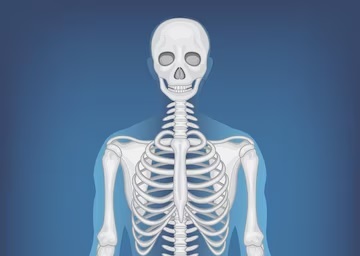Organization and the Structure of the Body
All living organisms, whether they are single-celled or multi-celled, have a specific level of organization within their bodies. This organization is essential for the efficient functioning of the various processes that sustain life.
At the most fundamental level, there are unicellular organisms, such as bacteria and some protists, which are composed of a single cell. These cells are responsible for carrying out all the necessary life functions, including movement, feeding, respiration, and reproduction.
In contrast, multicellular organisms, like plants and animals, are made up of many specialized cells that work together to perform various tasks. These cells are organized into tissues, which are groups of similar cells that work together to carry out a specific function. Tissues, in turn, are organized into organs, which are structures composed of two or more tissues that work together to perform a particular function. Finally, organs are organized into organ systems, which are groups of organs that work together to perform a major bodily function.
The human body is a prime example of a highly complex, multicellular organism. It is composed of numerous organ systems, each with a specific role to play in maintaining the overall health and function of the body. Some of the major organ systems in the human body include the:
- Skeletal system: Provides structure, support, and protection for the body.
- Muscular system: Facilitates movement and maintains posture.
- Circulatory system: Transports blood, oxygen, and nutrients throughout the body.
- Respiratory system: Facilitates the exchange of gases, such as oxygen and carbon dioxide.
- Digestive system: Breaks down and absorbs the nutrients needed for energy and growth.
- Nervous system: Coordinates and regulates the body’s various functions.
- Excretory system: Removes waste products from the body.
- Endocrine system: Produces hormones that regulate various bodily processes.
Understanding the organization and structure of the human body is crucial for appreciating how its various systems work together to maintain homeostasis, the state of balance and stability that is essential for life.
Movement: The Key to Life
Movement is a fundamental characteristic of all living organisms, from the smallest single-celled microbes to the largest animals. Whether it’s a bacterium swimming through a drop of water, a plant reaching towards the sun, or a cheetah sprinting across the savanna, the ability to move is essential for survival and adaptation.
In the human body, movement is made possible by the coordinated efforts of the skeletal and muscular systems. The skeletal system provides the rigid framework, while the muscular system supplies the power and control necessary for locomotion and other types of movement.
The Human Skeletal System
The human skeletal system is an intricate and remarkable structure, composed of 206 individual bones that work together to provide support, protection, and the ability to move.
Functions of the Skeletal System:
- Support: The bones of the skeletal system form the framework that supports the body and its various organs, preventing them from collapsing under their own weight.
- Protection: The skeletal system protects vital organs, such as the brain (enclosed in the skull), the heart and lungs (enclosed in the rib cage), and the spinal cord (enclosed in the vertebral column).
- Movement: The bones, in conjunction with the muscular system, facilitate movement by providing attachment points for muscles and allowing for a wide range of motions.
- Blood cell production: The bone marrow within certain bones, such as the femur and sternum, is responsible for the production of red blood cells, white blood cells, and platelets.
Structure of the Human Skeleton:
The human skeleton can be divided into two main parts: the axial skeleton and the appendicular skeleton.
The Axial Skeleton:
– The skull: Composed of 22 bones, the skull protects the brain and forms the foundation for the face.
– The hyoid bone: A small, U-shaped bone located in the neck that supports the tongue and is involved in swallowing and speech.
– The auditory ossicles: Three tiny bones in the middle ear that transmit sound vibrations from the eardrum to the inner ear.
– The rib cage: Consists of 12 pairs of ribs, the sternum, and the thoracic vertebrae. It protects the heart and lungs.
– The vertebral column: Also known as the spine or backbone, it is composed of 26 vertebrae and provides support and flexibility for the body.
The Appendicular Skeleton:
– The pectoral (shoulder) girdles: Each shoulder girdle is composed of the clavicle (collarbone) and the scapula (shoulder blade).
– The upper limbs: Consist of the humerus (upper arm), the radius and ulna (forearm), the carpals (wrist), the metacarpals (palm), and the phalanges (fingers).
– The pelvic girdle: Also known as the hip girdle, it is composed of the two hip bones and the sacrum.
– The lower limbs: Consist of the femur (thigh), the patella (kneecap), the tibia and fibula (lower leg), the tarsals (ankle), the metatarsals (foot), and the phalanges (toes).
Joints and Movement
Joints are the points where two or more bones come together, allowing for various types of movement. The type of movement allowed at a joint is determined by the shape and structure of the bones and the connective tissues that hold them together.
Types of Joints:
- Hinge joint: Allows for bending and straightening movements, as seen in the elbow and knee.
- Ball-and-socket joint: Allows for a wide range of circular and rotational movements, as seen in the shoulder and hip.
- Pivot joint: Allows for rotating or twisting movements, as seen in the neck (between the atlas and axis vertebrae).
- Gliding joint: Allows for small, sliding movements, as seen in the wrist and ankle.
The Connective Tissues:
- Cartilage: A smooth, flexible connective tissue that covers the ends of bones, reducing friction and allowing for smooth movement.
- Ligaments: Strong bands of connective tissue that connect bones to bones, stabilizing the joints and preventing excessive movement.
- Tendons: Connective tissues that attach muscles to bones, enabling the muscles to transmit their force to the bones, resulting in movement.
What Makes the Bones Move?
Bones are moved by the contraction and relaxation of skeletal muscles, which are attached to the bones by tendons. When a muscle contracts, it pulls on the tendon, which in turn pulls on the bone, causing it to move.
The contraction of a muscle is initiated by a signal from the nervous system. Motor neurons, which are part of the nervous system, transmit electrical impulses from the brain and spinal cord to the muscles, causing them to contract.
Some key muscles involved in movement include:
- Biceps: Located in the front of the upper arm, the biceps are responsible for bending the arm at the elbow.
- Triceps: Located in the back of the upper arm, the triceps are responsible for straightening the arm at the elbow.
- Quadriceps: Located in the front of the thigh, the quadriceps are responsible for extending the leg at the knee.
- Hamstrings: Located in the back of the thigh, the hamstrings are responsible for bending the leg at the knee.
Movement in Other Animals
While the human skeletal and muscular systems are highly complex, the ability to move is a characteristic shared by a wide variety of organisms, each with their own unique adaptations.
Earthworms:
Earthworms use a combination of longitudinal and circular muscles to move through the soil. The longitudinal muscles contract and relax, causing the worm to elongate and shorten, while the circular muscles contract and relax, causing the worm to expand and contract, allowing it to burrow through the earth.
Snails:
Snails move using a muscular foot that extends from the underside of their body. The foot secretes a thin layer of mucus, which acts as a lubricant, allowing the snail to glide along surfaces.
Cockroaches:
Cockroaches have a hard, segmented exoskeleton that protects their body. They move using a series of jointed legs, each with claws or hooks that grip the surface they are walking on. Cockroaches can also use their wings to fly short distances.
Fish:
Fish, being aquatic vertebrates, have an internal skeletal system, known as an endoskeleton. They move using their fins, which are modified limbs, and their tails, which propel them through the water. The streamlined shape of fish’s bodies helps them to move efficiently through the water.
Snakes:
Snakes, being limbless vertebrates, move using a unique method called “lateral undulation.” They use the muscles along their body to create a series of S-shaped curves, which they then use to propel themselves forward.
Birds:
Birds have a unique skeletal system that is lightweight yet strong, allowing them to fly. Their wings are modified forelimbs that they use to generate lift and thrust, enabling them to take to the skies.
Investigative Experiments and Amazing Facts
- Experiment: Demonstrating Joint Movement
Materials: Popsicle sticks or straws, rubber bands, tape
Procedure:
– Use the popsicle sticks or straws to model different types of joints, such as hinge, ball-and-socket, and pivot.
– Secure the “bones” using the rubber bands and tape to demonstrate the range of motion for each joint type.
Amazing Fact: The human body has around 360 joints, allowing for a wide range of movements and flexibility.
- Experiment: Exploring Muscle Contraction
Materials: Rubber band, pencil
Procedure:
– Wrap a rubber band around your fingers, keeping it taut.
– Use your other hand to pluck the rubber band, observing how it snaps back.
– Relate this to the way muscles contract and relax to move the bones.
Amazing Fact: The average person has around 650 muscles in their body, with the tongue having the most (at around 17 pairs of muscles).
- Experiment: Measuring Lung Capacity
Materials: Graduated cylinder or container, straw
Procedure:
– Fill the graduated cylinder or container with water.
– Inhale deeply, then exhale slowly through the straw into the water.
– Measure the amount of water displaced, which represents your lung capacity.
Amazing Fact: The average adult human lung capacity is around 6 liters, but this can vary depending on factors like age, gender, and physical activity level.
- Experiment: Observing Exoskeleton Movement
Materials: Insect (such as a grasshopper or beetle), magnifying glass
Procedure:
– Carefully observe the movement of an insect, noting how its exoskeleton and joints allow it to walk, jump, or fly.
– Use the magnifying glass to get a closer look at the insect’s leg and joint structure.
Amazing Fact: The exoskeleton of an insect is made of a hard, chitinous material that provides support and protection, while still allowing for movement.
- Experiment: Modeling Bird Wing Movement
Materials: Cardboard, scissors, tape, rubber bands
Procedure:
– Cut out a simple wing shape from the cardboard.
– Use the rubber bands to attach the “wing” to your arm, simulating the movement of a bird’s wing.
– Experiment with different wing shapes and flapping motions to observe how they affect the lift and thrust generated.
Amazing Fact: The largest bird in the world, the wandering albatross, has a wingspan that can reach up to 3.7 meters (12 feet), allowing it to soar effortlessly over the ocean for hours.
These experiments and amazing facts help to illustrate the diverse and fascinating ways in which living organisms, including humans, are able to move and interact with their environments. By actively engaging with these hands-on activities, students can deepen their understanding of the underlying principles and adaptations that enable movement in the natural world.
Conclusion
In this chapter, we have explored the remarkable complexity and versatility of the human body’s ability to move. From the intricate structure of the skeletal system to the coordinated actions of the muscular system, we have delved into the mechanisms that allow us to perform a wide range of movements, from the most basic to the most sophisticated.
By understanding the functions of the various bones, joints, and muscles, as well as the role of the nervous system in initiating and controlling movement, we have gained a deeper appreciation for the engineering marvel that is the human body. Furthermore, by examining the diverse strategies employed by other living organisms, we have seen the incredible adaptations that have evolved to facilitate movement in a variety of environments.
As we continue to study the science of movement, we will undoubtedly uncover even more fascinating insights into the ways in which living things interact with their surroundings. Whether it’s the graceful flight of a bird, the burrowing prowess of an earthworm, or the lightning-fast reflexes of a predator, the ability to move is a fundamental characteristic that underpins the very essence of life.
This worksheet covers the following topics:-
Organisation and the structure of the body
Unicellular, multicellular, tissue, organ, organ system,
Movement
The human skeletal system
Functions of the skeleton
Support, protection, movement, making blood cells
Structure of the human skeleton, The skull,
The backbone or the spine, vertebrae, spinal cord, vertebral column
The Rib cage, floating ribs,
The limbs (arms and legs), femur, humerus
Joints and movement
Cartilage, ligaments, Hinge joint, ball and socket joint,
pivot joint, gliding joint,
What makes the bones move, tendons, triceps, biceps,
Movement in other animals
Earthworm, snail and cockroach, exoskeleton,
Fish, endoskeleton, vertebrates,
Streamlined-shape,
snake, bird
Image Courtesy: Freepik.com

















